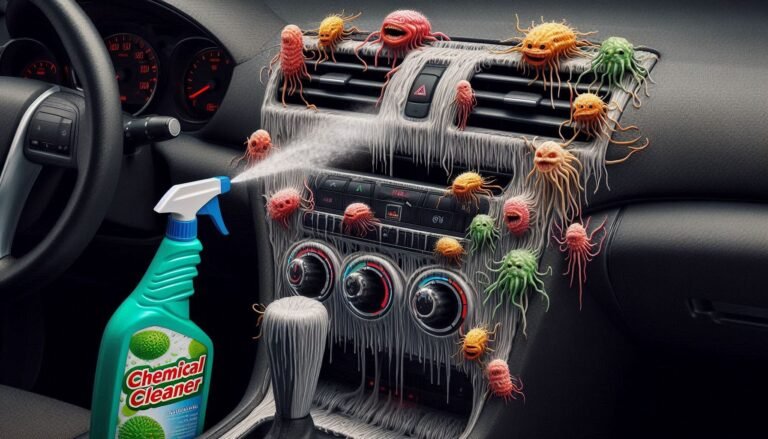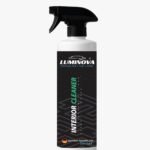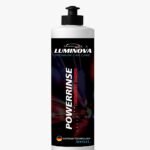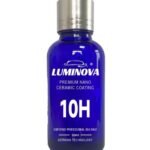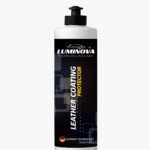Protect Your Car’s Paint Like a Pro: How to Shield It from the Elements with Paint Sealants
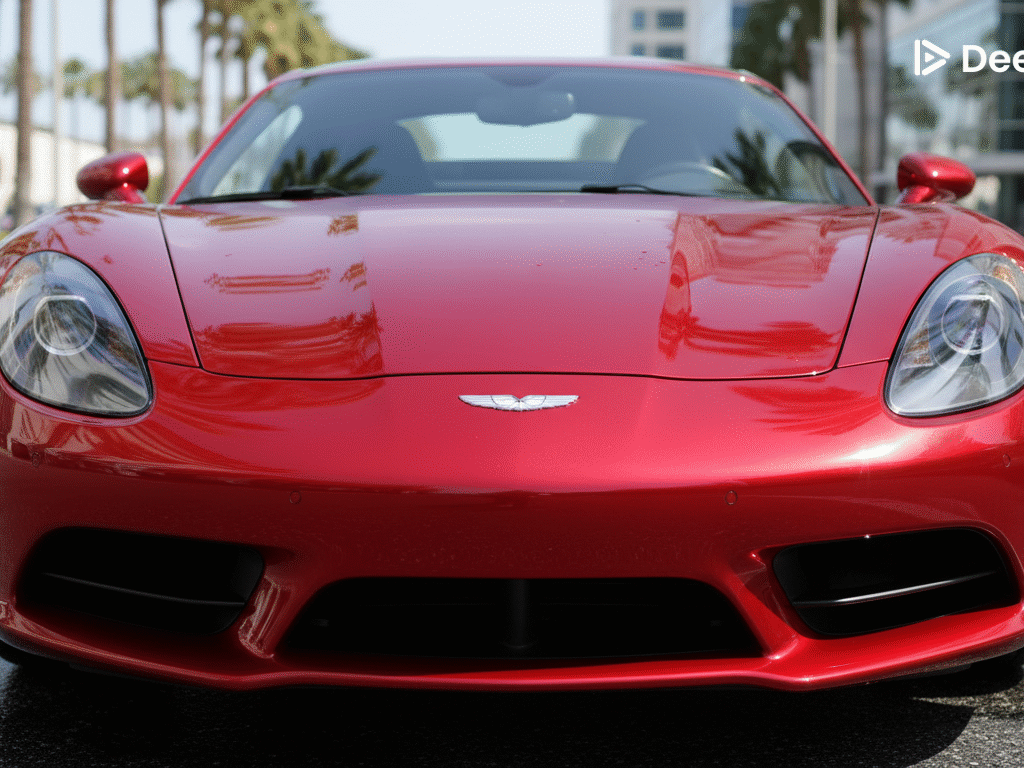
By Ali Hasan Omar | October 24, 2024
Introduction
Maintaining your car’s appearance is more than just about aesthetics—it’s crucial for preserving its value. One of the most effective ways to protect your car’s paint from harmful environmental factors is by applying a chemical paint sealant. In this guide, we’ll walk through everything you need to know to professionally protect your car’s paint using a chemical sealant.
What is a Paint Sealant?
A paint sealant is a synthetic polymer that bonds to your car’s paint, creating a durable, glossy layer. Unlike traditional waxes made from natural products, paint sealants are engineered for long-lasting protection—up to six months or more. They act as a barrier against contaminants such as UV rays, acid rain, road salts, bird droppings, and more.
This synthetic layer forms a shield that is hydrophobic (water-repellent), preventing contaminants from settling on your car’s surface. This makes it easier to clean and provides longer-lasting protection compared to waxes.
Key Benefits of Paint Sealants:
- Durability: Paint sealants last longer than traditional car waxes, with some formulas providing protection for up to a year.
- UV Protection: Sealants protect your car from the harmful effects of UV rays, which can cause paint to fade and oxidize over time.
- Water Repellency: Sealants create a hydrophobic (water-repellent) surface, causing water to bead up and roll off easily, which reduces the risk of water spots.
- Protection Against Contaminants: Sealants form a strong barrier that protects against bird droppings, tree sap, road salts, and other environmental contaminants.
- Enhanced Shine: Sealants can give your car a sleek, glossy appearance, making it look like it just rolled off the showroom floor.
How Do Paint Sealants Work?
Paint sealants bond chemically with your car’s paint, curing into a transparent, durable layer. Unlike wax, which wears off relatively quickly, sealants create a lasting shield against the elements. Sealants are available in various forms—liquid, spray, or paste—without affecting the protection they offer.
Step-by-Step Guide to Using a Paint Sealant
Step 1 – Gather the Necessary Materials
To apply a paint sealant, you will need the following materials:
- Chemical paint sealant of your choice
- Microfiber applicator pads or foam pads
- Microfiber towels for buffing
- Car wash soap and a wash mitt
- Clay bar or clay mitt (optional but recommended)
- Car polish (optional, for added shine and to remove imperfections)
Step 2 – Wash Your Car Thoroughly

Before applying any paint protection product, it’s essential to ensure your car is completely clean.
- Use a High-Quality Car Wash Soap: Wash your car using a pH-balanced soap to remove dirt, road grime, and any previous waxes or protectants. Avoid using household soaps, as they can strip your car’s paint of its natural oils.
- Dry the Car Completely: Use a microfiber drying towel or chamois to thoroughly dry your vehicle before proceeding to the next step.
Step 3 – Decontaminate the Paint Surface (Optional but Recommended)

After washing, your car’s paint might still have some contaminants like brake dust, tar, or tree sap. Decontaminating your car’s paint will ensure a smoother finish and better bonding of the sealant.
– Clay Bar or Clay Mitt: Use a clay bar or a clay mitt with clay lubricant to remove embedded contaminants. This step is important if you want to achieve a smooth, clean surface for the sealant to bond effectively.
Step 4 – Polish the Paint (Optional)

If your car’s paint has imperfections like swirl marks, light scratches, or oxidation, now is the time to address them. While this step isn’t mandatory, polishing the paint will enhance the overall appearance and ensure the sealant locks in the best possible shine.
– Use a Dual-Action Polisher or Hand Polish: Apply a car polish using a polisher or by hand with a foam applicator pad to smooth out imperfections and create a flawless surface.
Step 5 – Apply the Paint Sealant

Once the car is clean, decontaminated, and polished, you’re ready to apply the sealant.
- Shake the Sealant: Shake the sealant bottle well before use to ensure the formula is mixed evenly.
- Apply in Sections: Using a microfiber applicator pad or foam pad, apply a small amount of sealant to the pad and work on one section of the car at a time (e.g., hood, roof, door panels). Spread the sealant evenly in a thin, even layer, using circular or overlapping motions.
Pro Tip: Less is more when applying sealants. A thin, even layer is more effective than applying too much product, which can make it harder to buff off later.
Step 6 – Allow the Sealant to Cure
After applying the sealant, allow it to bond with the paint by letting it cure. Check the manufacturer’s instructions for the recommended curing time, but typically, this is around 10-20 minutes. Some modern sealants may require longer curing times, particularly in humid environments.
Step 7 – Buff Off the Sealant

Once the sealant has cured, use a clean microfiber towel to buff off the excess product. Buff in gentle circular motions to reveal a high-gloss shine.
– Avoid Applying Excess Pressure: Use light to moderate pressure when buffing off the sealant. The goal is to remove excess residue while allowing the cured sealant to remain on the paint surface.
Step 8 – Let the Sealant Cure Fully
For the best results, avoid exposing your car to water or harsh elements (such as rain) for at least 12-24 hours after application. This allows the sealant to fully cure and bond with the paint, ensuring maximum protection.
Benefits of Using Paint Sealant Over Traditional Wax
While both wax and sealants offer protection, sealants provide several advantages over traditional waxes:
- Longevity: Sealants last much longer than waxes, offering protection for 6-12 months versus a few weeks to a couple of months for waxes.
- Better Protection: Sealants are more resistant to environmental damage, particularly UV rays, acid rain, and bird droppings.
- Easier Application: While wax requires more frequent reapplication, sealants are generally easier to apply and require less upkeep.
For those who prefer the deep shine of wax, consider applying wax on top of the sealant for added gloss.
Graphene: The Future of Paint Protection
Modern advancements have introduced graphene into car care products. Graphene, the strongest substance known to man, offers superior protection against scratches, UV rays, and chemical contaminants. Graphene-infused waxes combine the durability of sealants, the gloss of carnauba wax, and the unparalleled strength of graphene.
Additional Tips for Maintaining Paint Protection

- Regular Washing: Even with a sealant, it’s important to wash your car regularly to prevent the buildup of contaminants. Use a pH-balanced car wash soap that won’t strip the sealant.
- Use a Quick Detailers: In between full sealant applications, you can use a spray sealant or quick detailer to refresh the protective layer and boost the shine.
- Protective Car Cover: Investing in a high-quality car cover is an essential step in protecting your car’s paint. A well-fitted cover acts as a physical barrier against UV rays, bird droppings, tree sap, and other contaminants. Choose a cover specifically designed for your vehicle’s make and model, ensuring it’s made from breathable materials with proper ventilation to prevent moisture buildup.
- Minimize Sun Exposure: Prolonged exposure to UV rays can cause your car’s paint to oxidize, leading to fading, dullness, and even peeling. Whenever possible, park in shaded areas to protect your car’s exterior. For added protection, use a windshield sunshade to shield the interior and reduce heat buildup.
- Repair Paint Chips or Scratches Promptly: Even minor paint chips or scratches can expose your car’s metal to rust and corrosion. It’s important to address these imperfections as soon as possible by seeking professional repair services. Auto repair specialists can restore your vehicle’s surface through techniques like spot repairs and color matching, preventing further damage and preserving your car’s appearance.
Conclusion
Using a chemical paint sealant is one of the most effective ways to protect your car’s paint from the elements. Not only does it provide long-lasting protection against harmful UV rays, acid rain, and environmental contaminants, but it also enhances your car’s appearance with a sleek, glossy finish. By following the steps outlined above and choosing the right product for your vehicle, you can keep your car looking like new for months at a time, all while ensuring its value and beauty remain intact.
FAQs
What’s the difference between a paint sealant and traditional car wax?
Paint sealants are synthetic polymers that last longer and provide better protection against environmental elements like UV rays, while waxes are natural and need more frequent reapplication.
How long does a paint sealant typically last?
Most paint sealants last between 6 to 12 months, depending on the product and environmental conditions. Some high-quality sealants can last even longer.
Can I apply wax over a paint sealant?
Yes, applying wax over a sealant can enhance the gloss and add a deeper shine, though the wax itself will require reapplication sooner than the sealant.
Do I need to decontaminate my car’s paint before applying a sealant?
While it’s not mandatory, decontaminating with a clay bar or mitt is recommended. It removes embedded contaminants, ensuring a smooth surface and better bonding of the sealant.
How should I prepare my car before applying a paint sealant?
Thoroughly wash your car with a pH-balanced soap, dry it, and consider using a clay bar or polish to remove contaminants and imperfections before applying the sealant.
Can I apply a paint sealant myself, or do I need a professional?
You can easily apply a paint sealant yourself with the right tools and products. However, if you're unsure, a professional detailing service can provide expert results.
Does a paint sealant protect my car from UV damage?
Yes, paint sealants provide excellent protection against UV rays, preventing paint fading and oxidation caused by sun exposure.
What’s the difference between a liquid, paste, or spray sealant?
The difference lies in the application method, not the level of protection. Liquid and paste sealants usually require more effort to apply, while spray sealants are faster and easier.
How long should I wait after applying a sealant before exposing my car to water?
After applying a paint sealant, it’s best to avoid exposure to water or harsh elements for at least 12 to 24 hours to allow the sealant to fully cure.
Will a paint sealant make my car shine as much as wax?
Yes, modern paint sealants can give your car a high-gloss, showroom-quality finish. Some enthusiasts still prefer the warmer glow of wax, which is why some apply both.
Can I apply a sealant to a car with existing minor scratches or swirl marks?
Yes, but for the best results, it’s recommended to polish your car first to smooth out imperfections before applying the sealant.
How does graphene-infused sealant differ from regular paint sealant?
Graphene-infused sealants offer even stronger protection than traditional sealants. They provide enhanced resistance to scratches, UV rays, and contaminants, along with longer-lasting durability.


